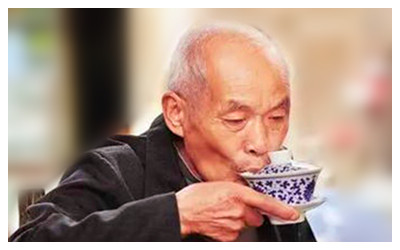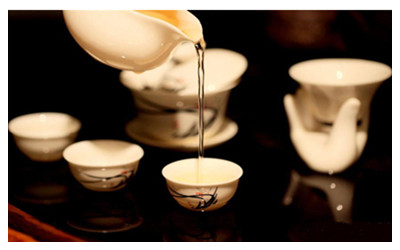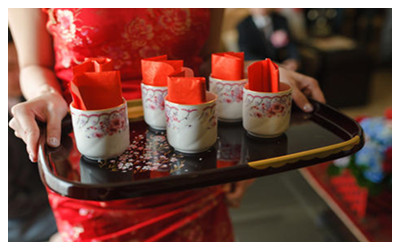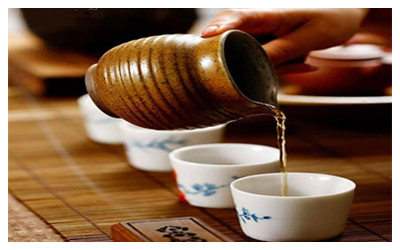Chinese Tea ceremony is not only about making or drinking a cup of tea, but more importantly, within a cup of tea, there is the essence of sky, earth, mountains, water, love, wisdom and life. The Chinese Tea Ceremony has a long history in China since Tang Dynasty, and became a practice that helps people to cultivate themselves and get spiritual perception. Among scholars, intellectuals and ordinary people, people have different ways of preparing and enjoy the tea. In this series of events, we are going to perceive those from a cup of tea. In modern times, there are three major ways to drink and appreciate tea
 Gaiwan (cap-cup) Tea
Gaiwan (cap-cup) Tea
The Covered Tea was originally created by imperial family in the Qing Dynasty(1645-1911), and then, drinking tea with a cap-cup was the most prevalent way adopted by officials and civilians in Beijing. Today, because it can keep tea warm, the Covered Tea is popular everywhere in China.
The Covered Tea Set includes a lid on the top meaning heaven, a tray on the bottom meaning earth, and a bow (cup)l in the middle meaning people. Hence, this tea set is also called "三才碗(San Cai Wan) in Chinese.
Usually, people put the lid on the cup. If you need the tea to be thicker, you can use the lid to gently scrape the surface of the water, and turn tea in the bowl up and down.
 Kung-fu Tea
Kung-fu Tea
Developing from the method recorded in Classics of Tea written by Lu Yu of the Tang Dynasty (618-907), Kung-fu tea is popular in southern Fujian area and Guangdong Province. In this method, tea is brewed with spring water. When the water is boiling, put Wuyi tea into a Yixing pot and brew it with the boiling water, and then pour warm water over the pot. The specialty of this method is to heat the pot with warm water both inside and outside in order to bring out the best quality of the tea.
The standard Kung-fu tea requires ten special techniques, namely back fire, shrimp-palp water (water with a temperature near boiling point), present the tea, put the tea, heat the cups, heat the pot, high pour, low pour, scrape off the foam, and clean the lid. Generally, there are four people involved in a Chaoshan Kung-fu tea ceremony, including the host who handles the process.
 Wedding Tea
Wedding Tea
Nowadays, many rural Chinese still refer to the wedding as "Shou Cha" (literally "accepting tea") or "Chi Cha" ("eating tea"), bride-price as "Cha Jin" ("tea money") and betrothal gifts as "Cha Li " ("tea gift"), preserving the custom of ancient marital practices.
Tea also plays an important role when a party is sent to escort the bride to the groom's house or to the formal wedding ceremony. Although some people still use tea as a gift for the couple, tea plays a bigger role in other aspects: the rites of drinking tea from nuptial cups by the bridegroom and bride, all friends and relatives drinking tea together to indicate future harmony, and the bride and groom proposing a tea toast to their parents and elders to express their gratitude, etc.
 Chaniang (Mother Tea)
Chaniang (Mother Tea)
This has been the most popular way adopted by ordinary people. In this method, tea is poured from a big pot to several small cups. The typical illustration can be found in A Spring Market in A Time of Peace and Prosperity, drawn by Ding Guanpeng living in Emperor Qianlong's reign in the Qing Dynasty.

 Gaiwan (cap-cup) Tea
Gaiwan (cap-cup) Tea Kung-fu Tea
Kung-fu Tea Wedding Tea
Wedding Tea Chaniang (Mother Tea)
Chaniang (Mother Tea) Ask Questions ?
Ask Questions ?